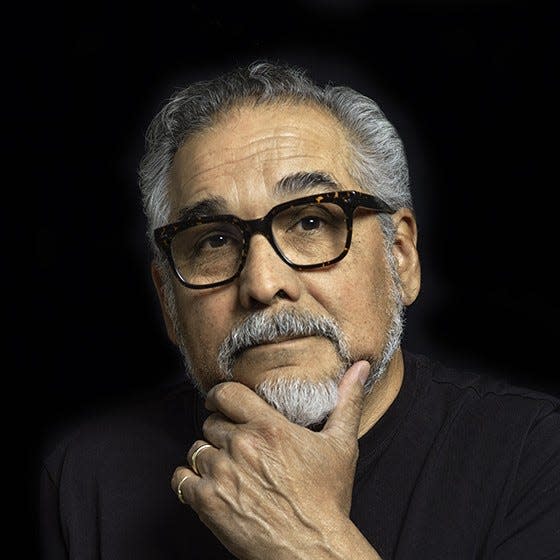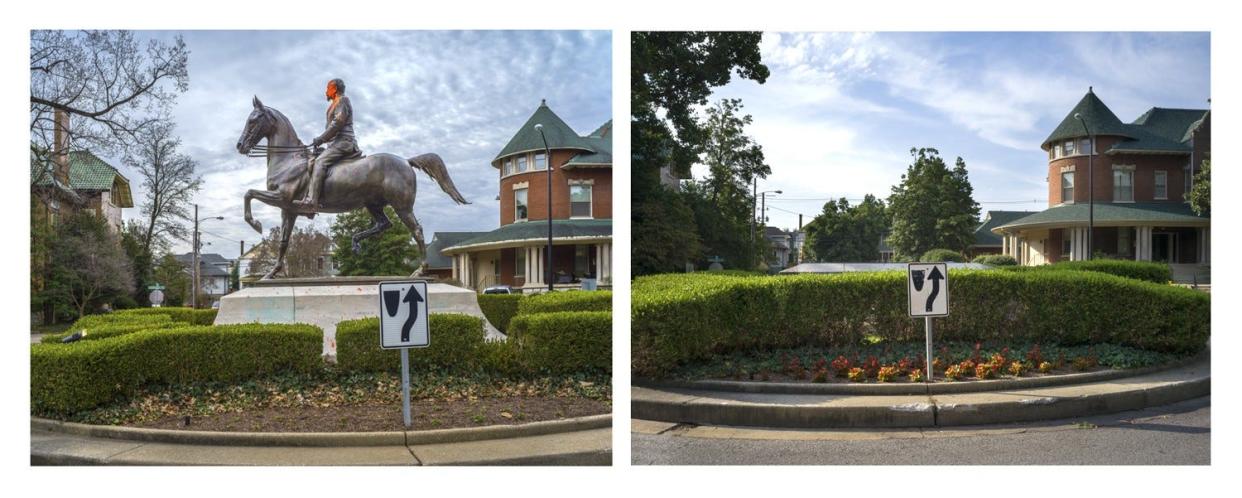Brighton photog aims to educate on dark history of Confederate monuments
BRIGHTON — A local photographer is one of 188 recipients of the Guggenheim Fellowship, an annual competition in the U.S. and Canada for those who've "demonstrated exceptional capacity" and "exhibit great promise."
In 2017, Carlos Diaz of Brighton began researching and photographing Confederate memorials in the 13 states that fought for the Confederacy in the Civil War. Diaz is working on a book with writer Michael Stone-Richards called “History, Memory, Myth: Re-Imagining the Confederate Monument in the American South.”
With the Guggenheim Fellowship, Diaz will embark on the next phrase of the project, returning to each site he's photographed and reshooting locations where the statues have been removed.

“It was quite a surprise, but it's an honor to have been awarded the fellowship," Diaz said. "I will do everything I can to hold up to that."
Since Diaz began his project in 2017, there have been several national debates on Confederate monuments. The Unite the Right Rally in Charlottesville, Virginia, for example, was held in response to outrage over the proposed removal of a statue of Robert E. Lee.
Many monuments came down after the death of George Floyd in 2020 and the Black Lives Matter protests that followed.
According to Diaz, some Confederate monuments were constructed immediately after the Civil War, but they were exclusively in cemeteries.
According to a graph from the Southern Poverty Law Center, the largest spike in Confederate monument dedications came between 1900 and 1920, when states were enacting Jim Crow Laws and the Ku Klux Klan was experiencing a revival. Another spike came in the 1950s and 1960s, during the Civil Rights movement.
“They went up exclusively in front of city halls, courthouses and in the main intersections of town,” Diaz said. “I think it's pretty clearly understood now by most historians that they went up as a way of intimidating African-Americans and sending (a) message."

For Diaz, a second-generation Mexican-American, much of his work comes from his own experience. His parents worked hard to provide “the American Dream” for their children. As a teenager, Diaz dove into the music scene, then joined the Marines, before finding his way to photography.
“It was really photography that began to open my eyes to the greater world that I was a part of," he said. "Photographers are committed to this fact that, in order to make work, you have to engage with the world around you. You have to physically go someplace to make a photograph. And so, all of the work that I have done is, in some way, related to who I am as a person. “
Diaz hopes the book will educate others on the history of America, slavery and the south. Each monument featured in the book will include historical context about the towns in which they're located.
But there's still plenty to do before the book is published. There are between 300 and 360 monuments to return to. Diaz estimates it'll take two or three years.
In the meantime, Diaz has an exhibition at the Detroit Historical Museum titled "1984 World Series Street Portraits," on display until Nov. 17. Some of his work is also available at The Artisan’s Bench in Brighton.
— Contact reporter Tess Ware at tware@livingstondaily.com. Follow her on Twitter @tess_journalist.
This article originally appeared on St. Cloud Times: Brighton photog aims to educate on dark history of Confederate monuments
